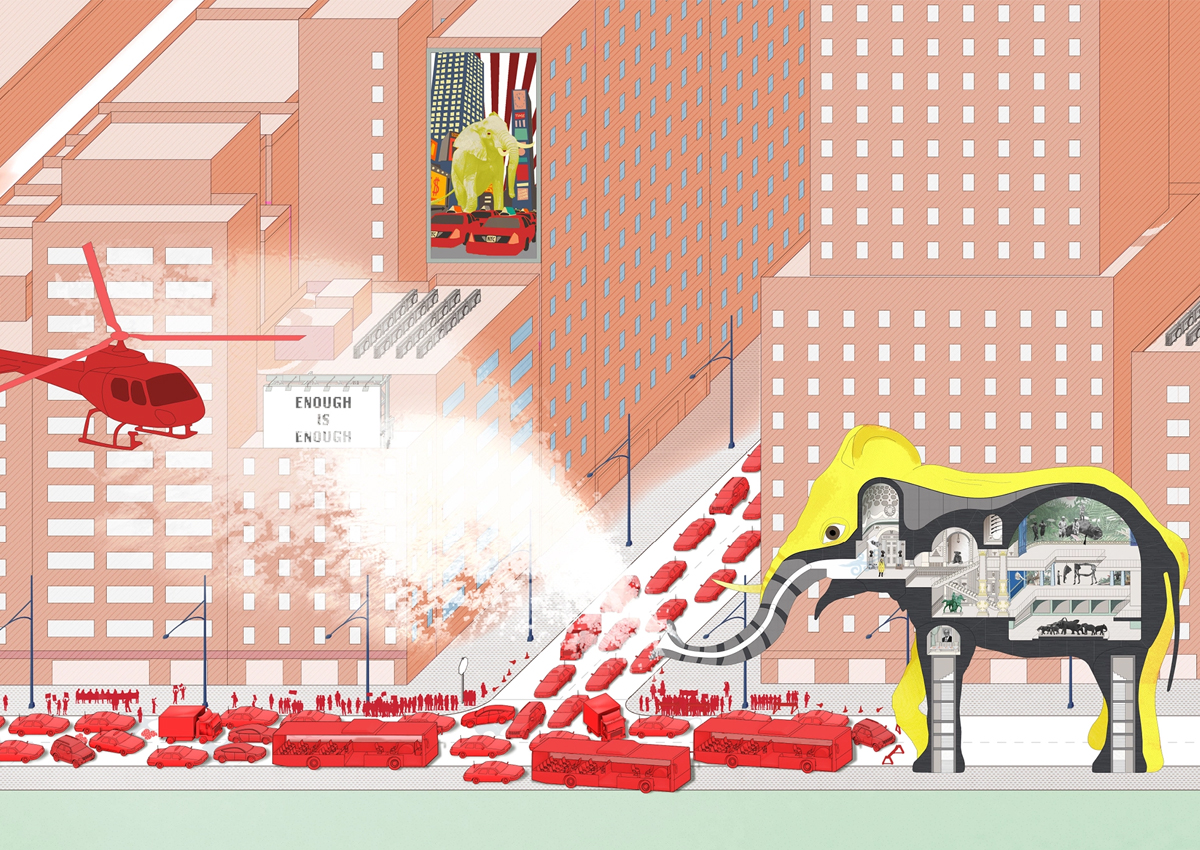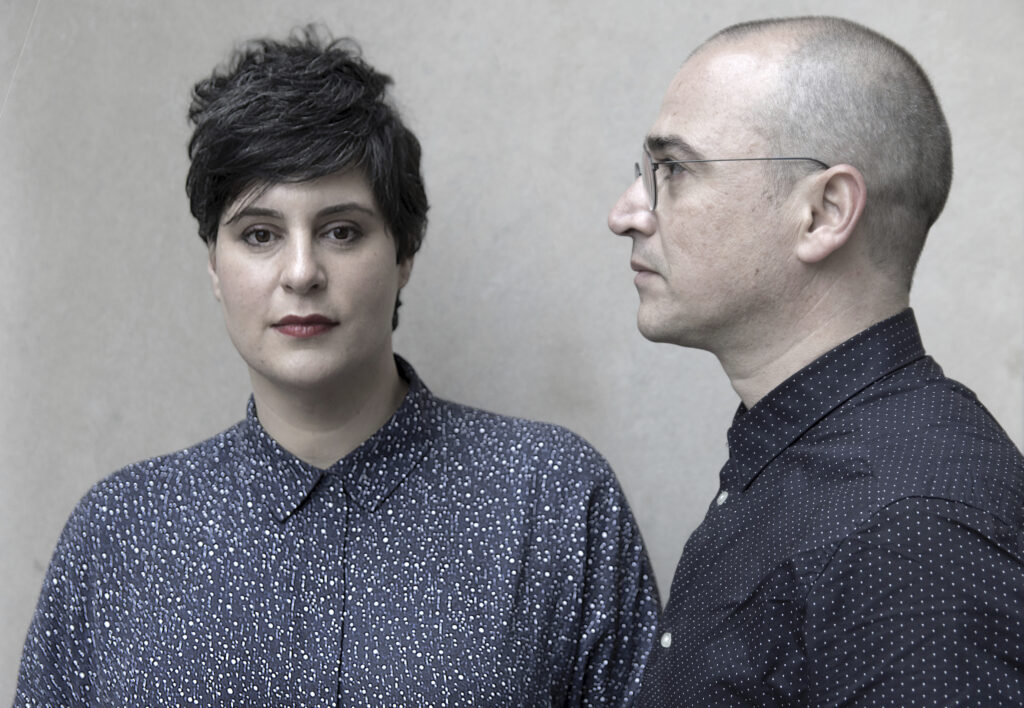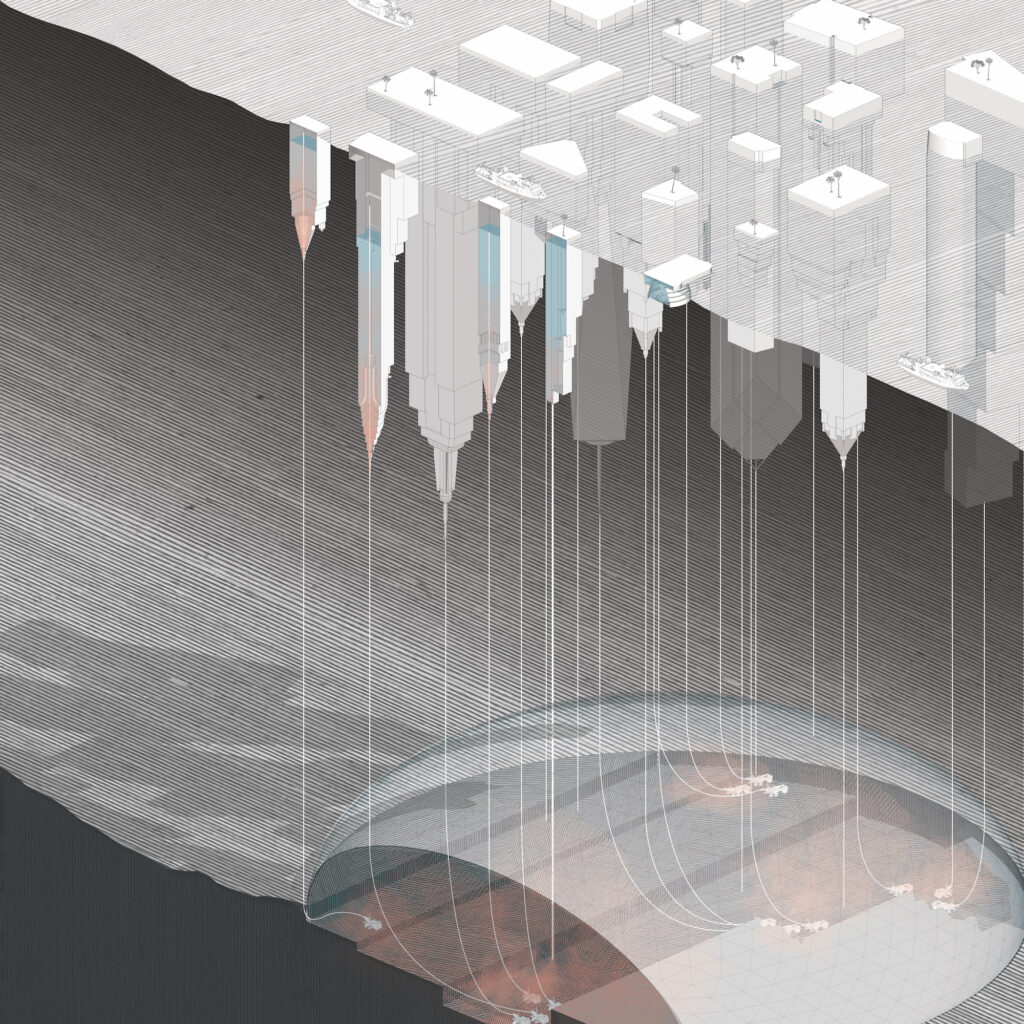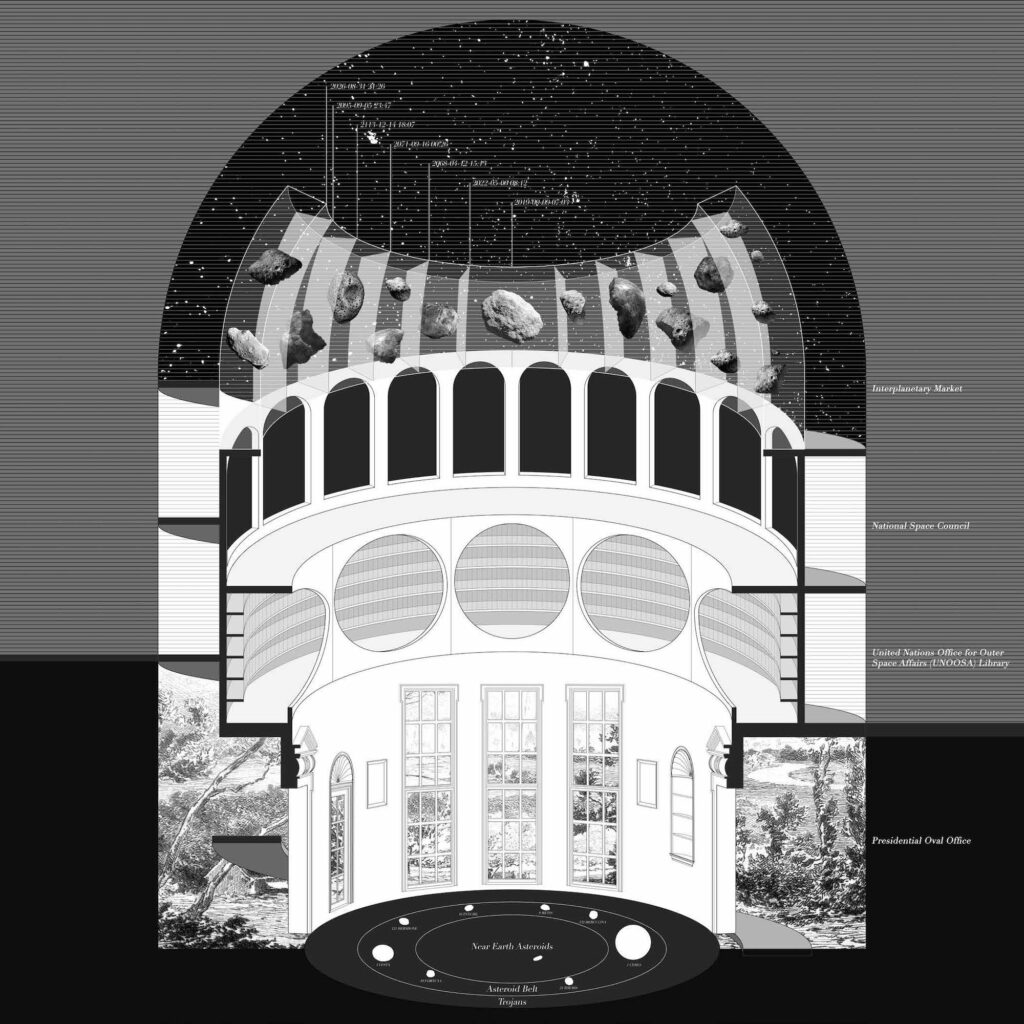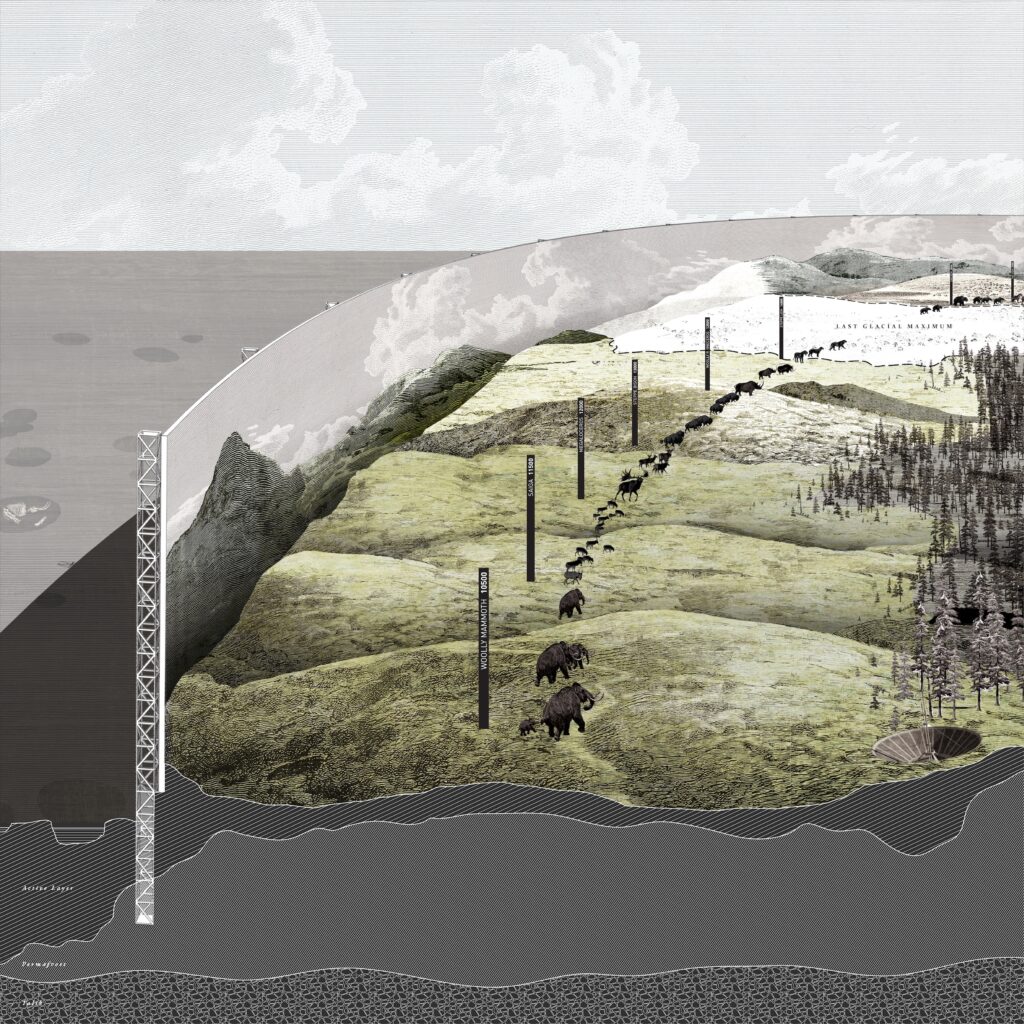DESIGN EARTH utilise le projet spéculatif – dessin et récit – pour sensibiliser le public à la crise climatique. La recherche en design est dirigée par Rania Ghosn et El Hadi Jazairy.
Leurs travaux ont été présentés à l’échelle internationale, notamment à la Biennale de Venise, au Musée Bauhaus de Dessau, au SFMOMA, à la Triennale de Milan, au Musée Sursock de Beyrouth, au Musée Times de Guangdong, à la Triennale d’architecture d’Oslo et à la Biennale d’architecture et d’urbanisme de Séoul. Ils font également partie de la collection permanente du Musée d’art moderne de New York. Ghosn et Jazairy sont les auteurs de Geographies of Trash (2015) ; Geostories: Another Architecture for the Environment (3e éd. 2022), The Planet After Geoengineering (2021) et Climate Inheritance (2023). DESIGN EARTH a été distingué par de nombreux prix, notamment l’Artist Fellowship des États Unis, le prix Architectural League Prize for Young Architects + Designers, l’Association of Collegiate Schools of Architecture Faculty Design Awards et le prix Graham Foundation for Advanced Studies in the Fine Arts.
Rania Ghosn (Beyrouth, née en 1977) est professeure associée et directrice du Master of Science in Architecture Studies (SMArchS) en urbanisme au Massachusetts Institute of Technology.
El Hadi Jazairy (Algérie, né en 1970) est professeur d’architecture et directeur du programme de Master en urbanisme à l’université du Michigan.
Brava!
The Museu de Ciències Naturals de Barcelona (Natural Science Museum of Barcelona) is a prominent institution preserving over 130 years of natural history heritage, including more than three million specimens in mineralogy, petrology, paleontology, zoology, and botany. Since 2011, it mainly operates from the iconic Forum Building at Parc del Fòrum, designed by architects Herzog & de Meuron. One of the museum’s most emblematic piece is a 20-meter-long skeleton of a whale beached at Cap de Ras, Llançà in Costa Brava in 1862. This iconic cetacean is now called “Brava” – which means “wild” in Catalan and Spanish. Since the 1950s, tourism has taken over from fishing as the principal economy of Costa Brava with a large number of hotels and sea resorts, and mainly for package holiday tourists from Europe.
DESIGN EARTH’s ongoing project is a series of fables that addresses the elephant in the room—the climate crisis—by animating charismatic figures from natural history museums. This design research identifies and leverages figures from the collections all while unsettling the museum apparatus—the devices, archives, histories, and audiences. The fragmentary remains of such creatures are animated, brought back to life, so to speak in rhyming verse, colorful imagery, and with some poignant humor. In Barcelona, this speculative fiction workshop will curate a media archive on the specimen, museum, city and region, with focus on the cultural prehistory, present, and speculative futures of the Mediterranean coast and of marine life.
